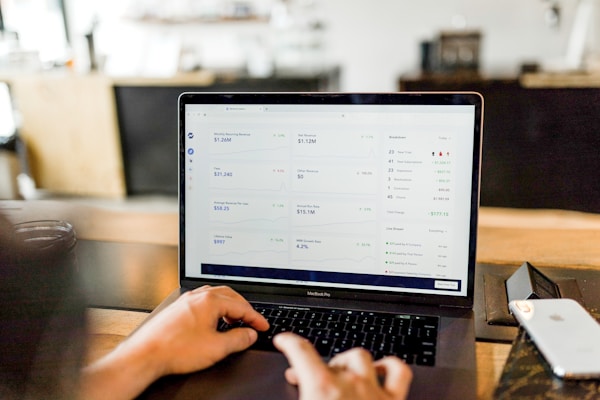Digital transformation is inevitable for businesses in the retail industry. The retail landscape is changing rapidly, and those who don’t embrace digital will be left behind. In this guide, we’ll explore digital transformation in the retail industry and how going digital can help you maintain your competitive edge. Keep reading to learn more.
Transforming the Modern Retail Marketplace

The retail industry has long been undergoing a digital transformation as technology advances and consumer behavior changes. This transformation is impacting the way retailers operate and how they interact with customers.
Technology is changing the way customers shop. They can now buy products online or through mobile devices. Retailers must adapt to this change by offering online shopping options and developing mobile apps. They must also ensure that their websites are user-friendly and that their checkout process is secure and easy to use.
Digital technologies are changing the way retailers communicate with customers. Retailers can now send targeted messages to customers based on their purchase history or preferences. They can also track customer behavior on their websites and use this data to improve their marketing efforts.
Digitizing Your Retail Business
Digital transformation is the process of transitioning from traditional business practices to those that rely on digital technologies. This shift can encompass everything from how a company operates internally to how it interacts with customers. The retail industry is no stranger to digital transformation, and many businesses are finding success by embracing new technologies.
Several steps can be taken to begin the process of digital transformation for your retail business. First, businesses should assess their current state and identify areas where they could benefit from using digital technologies. Once specific areas have been identified, businesses can then develop a plan for implementing these technologies. This may include creating or updating IT systems, revising processes and procedures, or training employees on how to use new tools and technologies.
Finally, once the plan has been put into action, businesses must continually evaluate their progress and make changes as needed.
Using Big Data Analytics To Improve Your Retail Business

When it comes to retail, big data (large amounts of complex data) and analytics can be used in a variety of ways to improve business. For one, retailers can use big data to understand customer behavior. By analyzing purchase histories, demographics, and other customer data, retailers can get a better understanding of what products or services customers are likely to buy. This information can then be used to create targeted marketing campaigns and product offerings that are more likely to appeal to customers.
Retailers can also use data analytics to improve inventory management. By tracking sales data and trends, retailers can better understand which products are selling well and which ones aren’t. This information can help retailers make smarter decisions about what products to stock in their stores and how much inventory they need on hand at any given time.
Additionally, retailers can use big data for price optimization. By analyzing competitor prices and past sales data, retailers can identify the ideal price points for different products. This information can help retailers stay competitive while still making a profit.
Meeting the Challenges of Digital Transformation
To maintain a competitive edge, retailers must undergo a digital transformation, which can be challenging. One challenge is ensuring that the customer experience is consistent across all channels, including brick-and-mortar stores, websites, and mobile apps.
Another challenge is integrating new technologies into the existing infrastructure without disrupting operations. Retailers must also manage data security and privacy concerns and keep up with ever-changing consumer preferences.
Integrating social media into your digital marketing strategy is essential if you want to stay competitive in the retail industry. The benefits of doing so are vast and include reaching a larger audience, increasing brand awareness, and driving traffic to stores and websites.








